When Do You Plant Squash?
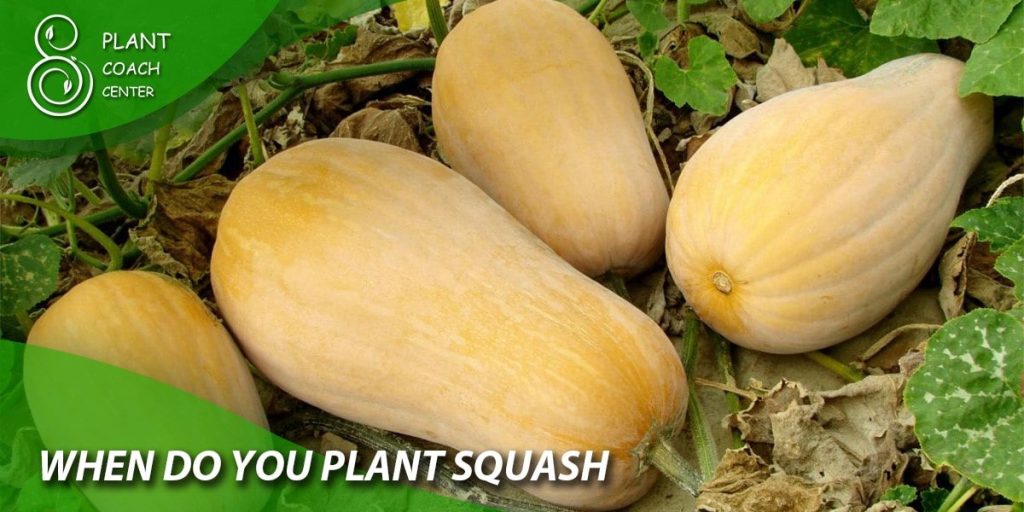
Welcome to the world of vibrant gardens and bountiful harvests! The journey of cultivating squash, those versatile and delectable gems of the vegetable kingdom, begins with a crucial question: When do you plant squash? As the seasons dance and temperatures shift, finding the optimal time to sow these seeds is an art that combines science, observation, and a touch of nature’s mystique.
Whether you’re a seasoned gardener or just starting your green-thumb adventure, understanding the intricacies of squash planting timelines is essential for a successful yield. In this article, we embark on a horticultural exploration, uncovering the secrets behind choosing the perfect moment to plant.
From deciphering the distinct preferences of different squash varieties to decoding the language of soil temperatures and local climate clues, we’ll equip you with the knowledge to make informed planting decisions.
Get ready to unlock the gates to a world where soil, sun, and seeds intertwine in a harmonious choreography, leading to a symphony of squash growth and gratifying garden-to-table delights.
Seasonal Symphony: Finding the Perfect Timing
In the orchestra of gardening, timing holds the conductor’s baton, determining whether your squash plants hit the high notes of healthy growth or stumble through a discordant performance. The art of planting squash hinges on understanding your local climate’s seasons and how they interact with these versatile veggies’ growth patterns.
Spring Serenade: Seizing the Opportunity
As the winter chill recedes and the first signs of spring grace the landscape, gardeners often find themselves itching to dig into the soil. However, planting squash too early can have disastrous consequences, with frost turning tender seedlings into withered memories.
Wait until all risk of frost has passed in cooler climates and the soil has warmed to around 60°F (15.5°C) before considering sowing squash directly in the garden. Alternatively, starting seeds indoors a few weeks before the last frost date can provide a head start.
Summer Crescendo: Harnessing the Warmth
The heart of summer carries its own set of considerations for planting squash. In regions with scorching summers, it’s crucial to balance providing warmth and preventing your plants from overheating. Planting in early to mid-summer allows the squash to take advantage of the long, sunny days ahead.
However, keep an eye on moisture levels; consistent watering is essential to counteract the heat’s drying effects and ensure robust growth.
Autumn Echoes: Planning for Late-Season Glory
With its cooler temperatures and golden hues, autumn might seem like an unlikely time to start planting squash. Yet, for gardeners looking to extend the growing season, this can be a strategic move.
Sowing certain fast-maturing varieties in late summer can yield a late-season harvest, capitalizing on the waning warmth before the frosty curtain descends. However, ensure your squash has ample time to mature before the first frost arrives, usually around 2 to 4 weeks before the average first frost date.
Regional Rhythms: Adapting to Your Climate
One of the keys to successfully timing squash planting lies in understanding your region’s climate nuances. Coastal areas might have milder winters, while inland locales might experience sudden temperature fluctuations.
Research local frost dates, observe the behavior of native plants, and tap into your local gardening community’s wisdom to gain insights into the optimal planting window.
Types of Squash and Their Time Preferences
In the world of squash, diversity reigns supreme. From the elongated elegance of zucchini to the hearty sweetness of butternut, each variety has its own set of preferences regarding planting times. Understanding these nuances can make all the difference in achieving a flourishing squash harvest.
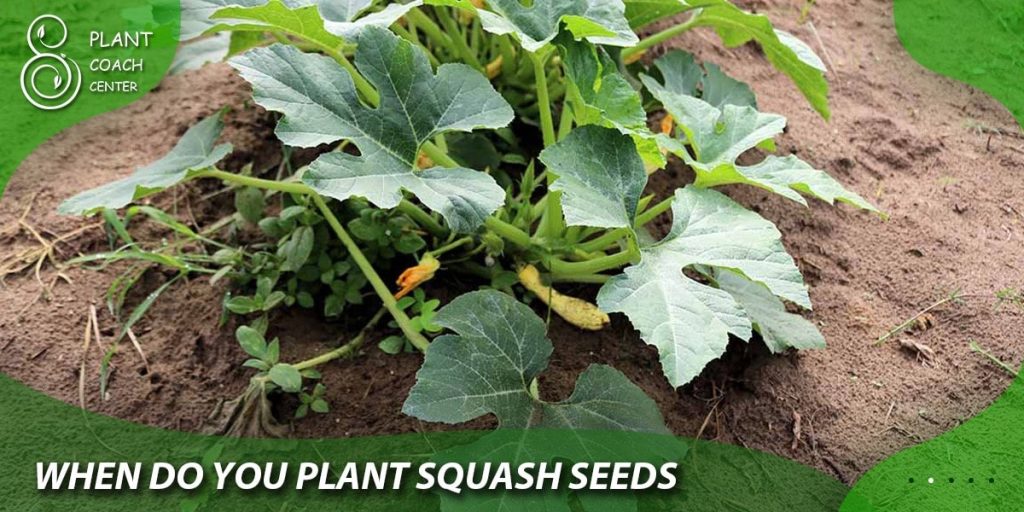
Zucchini Zeal: Embracing Early Planting
Zucchini, known for its prolific nature, is often the eager beaver of the squash patch. This versatile summer squash thrives in warm soil and is among the first to be sown as the frost retreats. Its speedy growth and high yield potential make it a favorite among gardeners looking to kickstart the growing season.
Plant zucchini seeds or transplants outdoors after the last frost date, ensuring the soil temperature reaches around 60°F (15.5°C) for optimal germination.
Delicata’s Dance: The Intermediate Option
Varieties like Delicata and Acorn squash strike a balance between the early-bird zucchini and the latecomer butternut. These types prefer slightly warmer soil and air temperatures to start their journey.
Wait until the soil has warmed to about 65°F (18.3°C) and the threat of frost has passed before planting these medium-duration squash varieties. Their shorter growing season allows for a later planting while yielding a robust harvest before autumn’s chill sets in.
Butternut Beauty: Basking in Late-Summer Warmth
The butternut squash, with its rich flavor and creamy texture, plays the role of the patient protagonist. Unlike its more eager counterparts, it thrives in hotter weather and appreciates being planted later in the season.
Aim for a soil temperature around 70°F (21.1°C) and wait until all frost risks have faded before introducing butternut seeds or seedlings to the garden. This strategy ensures the ideal conditions for steady growth and a fall harvest of mature, sweet butternut squash.
Spaghetti’s Secret: Tailored Timing
The lesser-known spaghetti squash possesses a distinctive texture that transforms into “noodles” when cooked. This variety, like a well-kept secret, requires its own tailored timing. Start seeds indoors a few weeks before the last expected frost, allowing them a head start on their growth journey.
Once transplanted outdoors, ensure the soil is warmed to around 60°F (15.5°C), accommodating its preferences for moderately warm conditions.
Frost-Free Zone: Understanding Soil and Temperature Readiness
As any gardener knows, the dance of plant life is deeply intertwined with the rhythms of temperature and soil conditions. Regarding squash, ensuring a frost-free environment and suitable soil temperatures are critical to nurturing a successful and thriving crop.
The Frosty Foe: Guarding Against Frost Damage
Frost can be the nemesis of tender squash plants. Even a slight touch of frost can blacken leaves and wither blossoms, setting back growth and reducing yield. To circumvent this, keep a vigilant eye on local weather forecasts and historical frost dates.
Typically, squash should only be planted after your area’s last expected frost date. Protective measures like row cover or cloths can create a miniature greenhouse effect for those eager to jump-start their gardens, shielding young plants from the cold and allowing for earlier planting.
Soil Thermometer: Gauging Warmth for Success
Squash seeds are like slumbering beauties awaiting the kiss of warm soil to awaken. Before planting, measuring soil temperature is essential, as it profoundly affects germination and early growth. Most squash varieties thrive when the soil temperature is consistently around 60°F (15.5°C) or higher.
A soil thermometer can eliminate guesswork, ensuring the earth is warm enough for the seeds to sprout and flourish. By delaying planting until the soil is sufficiently warm, you’ll give your squash a running start on the journey to maturity.
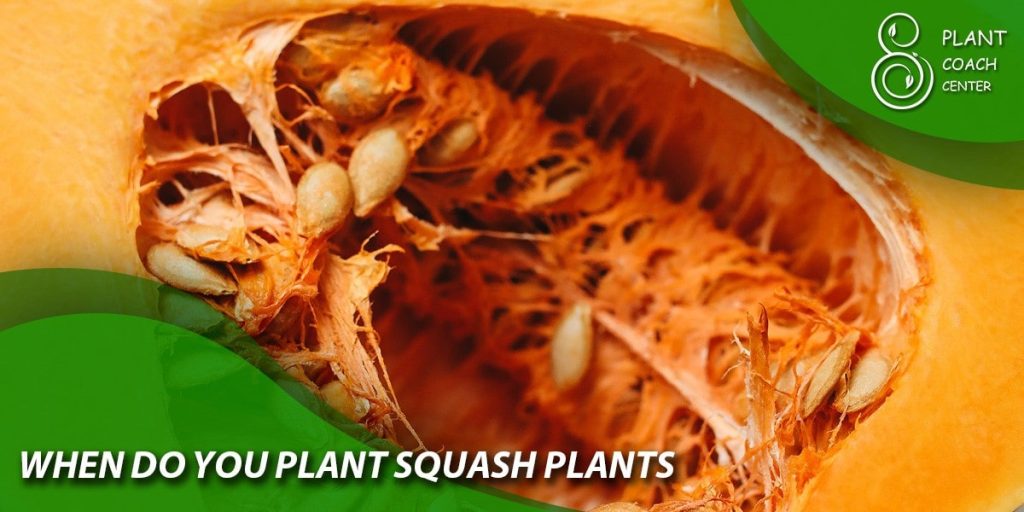
Warming Techniques: Creating a Cosy Bed for Seeds
In regions where spring arrives slowly, or summer takes its time to settle in, gardeners can employ techniques to raise soil temperatures and encourage squash growth. Using black plastic mulch, for instance, absorbs and retains heat from the sun, creating a warmer microclimate around the seedlings.
Raised beds can also help the soil warm up faster, aiding in quicker germination and healthier root development. Cloches or tunnels made from transparent materials can also trap heat and offer protection, creating a nurturing haven for squash to thrive.
Microclimate Matters: Considering Local Factors
Microclimates within your garden can significantly affect soil and temperature conditions. Areas near buildings or walls tend to warm up faster due to reflected heat, while low-lying spots remain more excellent for longer.
Understanding these microclimates allows you to strategically position your squash plants for optimal growth. Observe how sunlight, shade, and wind patterns interact with your garden space, adjusting your planting locations accordingly.
Starting Indoors or Direct Sowing: Pros and Cons
The decision to start squash seeds indoors or sow them directly in the garden can significantly influence your gardening journey. Each approach has its own advantages and challenges, impacting factors like germination rates, transplant shock, and overall plant health.
Indoor Initiation: Gaining a Head Start
Starting squash seeds indoors offers a head start to the growing season. Planting in controlled conditions ensures optimal germination rates, providing young seedlings with a nurturing environment away from pests or unfavorable weather.
This method allows you to extend your squash-growing season, as established transplants can be introduced to the garden earlier than outdoor sowing. However, the process demands extra attention, with considerations such as proper lighting, consistent watering, and the risk of transplant shock when moving seedlings outdoors.
Direct Delight: Embracing Simplicity
Direct sowing of squash seeds in the garden offers simplicity and the thrill of watching plants emerge from the earth. It eliminates the need for an indoor setup, and seeds are planted directly where they will grow. This method can be particularly effective with fast-germinating varieties like zucchini.
Sowing now minimizes the risk of transplant shock since seedlings are not disturbed during relocation. However, keep an eye on soil temperature and moisture to ensure successful germination, and be prepared to protect young plants from pests.
Transplant Trials: Navigating Seedling Shift
Transplanting seedlings from indoors to the garden requires a delicate touch. While indoor-started plants might have a head start, they also face a potential shock when transitioning to outdoor conditions.
Gradual acclimatization, or hardening off, is crucial to prevent stress and help seedlings adjust to fluctuating temperatures, wind, and direct sunlight. Timing the transplant is critical; ensure the plants are strong enough and the outdoor conditions are suitable to avoid setbacks.
Timing and Flexibility: Key Considerations
The choice between indoor starting and direct sowing also depends on your local climate, the squash variety, and gardening goals. Starting indoors can give your squash a fighting chance if your region has a short growing season.
Yet, direct sowing might simplify your gardening routine if your area experiences mild winters and a more extended frost-free period. Remember that some squash varieties, like zucchini, dislike transplanting and might perform better when sown directly.
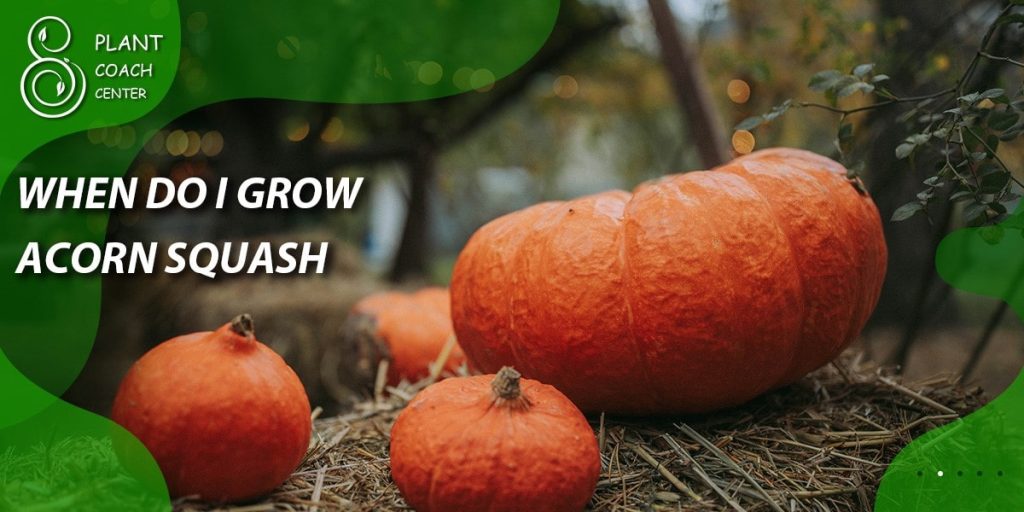
Local Clues and Nature’s Cues: Watching Nature’s Signals
Mother Nature often takes the lead in the intricate dance of planting squash, providing a symphony of clues and cues to guide gardeners in choosing the perfect moment for sowing. By observing and interpreting these subtle signs, you can synchronize your planting with the natural world’s rhythm.
Blooms of Beauty: Nature’s Timekeepers
Wildflowers, those delicate blooms that grace fields and roadsides, are like Mother Nature’s timekeepers, signaling the changing seasons. Watch for specific wildflowers appearing in your region as spring arrives. When these blooms burst forth, it’s often a sign that the soil is warming and the time for squash planting is drawing near.
The correlation between the appearance of these wildflowers and the optimal soil temperature for squash growth can provide valuable guidance.
Insect Interactions: Indicators of Ecosystem Balance
The insect world holds secrets that can influence your planting schedule. Pollinators, such as bees and butterflies, play a pivotal role in the reproductive cycle of plants. Observe when these beneficial insects become more active in your garden or local environment.
Their increased presence indicates a warmer climate and an environment conducive to successful pollination—two factors critical for squash production. When pollinators appear, it’s a sign that the conditions are ripe for planting squash seeds.
Migratory Mysteries: Birds and Timing
Migratory bird behavior can provide insights into the changing seasons and suitable planting times. Many birds time their migrations based on the availability of food, which in turn is influenced by the weather and temperature shifts.
When you notice migratory birds returning to your area, it’s often a sign that spring is in full swing and the environment is becoming hospitable for planting squash. These feathered travelers are attuned to nature’s cues, offering you a glimpse into the optimal time to join the planting journey.
Leafing Out: Trees and Foliage Signals
The emerging leaves of trees and other plants can also be your allies in timing squash planting. As temperatures rise and daylight hours increase, trees create new growth. This growth signifies that the environment is becoming more favorable for plant development in general.
Keep an eye on deciduous trees in your area; when they begin to bud and leaf out, it indicates that warmer conditions are prevailing, suggesting an appropriate window for planting squash.
Soil and Earth: Sensing the Ground’s Readiness
Nature’s cues aren’t solely about above-ground indicators. Below the surface, soil also communicates its readiness for planting. Reach down and feel the soil’s texture and warmth. If the earth feels comfortably warm and crumbly in your hands, it’s a sign that the conditions are conducive to planting squash seeds.
Additionally, observe soil-dwelling creatures like earthworms; their increased activity can indicate improved soil conditions that support healthy plant growth.
Extending the Season: Succession Planting and Late-Summer Options
Gardening is a dynamic art, and the pursuit of fresh harvests can extend well beyond the initial planting. To make the most of your squash-growing season, consider employing strategies like succession planting and exploring late-summer options, ensuring a continuous stream of these vibrant vegetables grace your table.
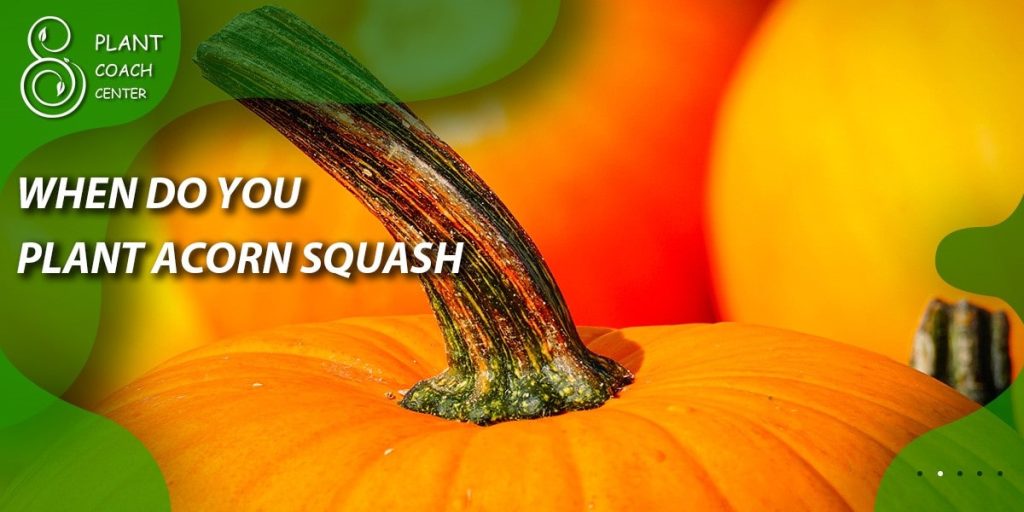
Succession Planting Symphony: An Ongoing Harvest
Succession planting is the garden’s way of singing an ongoing symphony of abundance. Stagger the sowings at regular intervals rather than planting all your squash seeds at once. This approach ensures that the next wave is ready as one batch of squash matures and is harvested.
By implementing succession planting, you can enjoy a consistent supply of squash over an extended period, making the most of your garden’s potential and keeping your kitchen stocked with fresh produce.
Late-Summer Serendipity: Capitalizing on Warmth
As summer’s warmth lingers and autumn approaches, you can extend your squash season by embracing late-summer planting. Fast-maturing squash varieties, such as certain zucchini types, can be sown mid-to-late summer.
By carefully calculating the days to maturity and the average first frost date for your area, you can select varieties with enough time to grow and ripen before the colder temperatures arrive. Late-summer planting adds a touch of serendipity to your garden, as you can enjoy a bonus harvest when most other crops are winding down.
Overcoming Challenges: Providing Extra Care
Late-summer planting and succession planting require a bit of extra care. As the growing season winds down, keeping an eye on temperature shifts and moisture levels becomes crucial. Young seedlings might face hotter weather and potential drought conditions, so providing ample water and shading can aid their establishment.
Additionally, consider using row covers or shade cloth to protect plants from intense late-summer sun or unexpected cold snaps. By being attentive to the unique needs of late-planted squash, you can navigate potential challenges and ensure their successful growth.
Embracing Variety: Diverse Late-Season Options
Late summer and early fall offer diverse squash varieties that flourish in cooler temperatures. Acorn, delicata, and Hubbard squash are excellent candidates for late-season planting. The cooler weather enhances their rich flavors and dense textures, making them a delectable addition to autumn meals.
By broadening your squash selection to include these late-ripening varieties, you can create a palette of flavors that spans from the last days of summer to the heart of fall.
Conclusion
In the intricate tapestry of gardening, timing is the thread that weaves the story of successful squash cultivation. From deciphering the preferences of diverse squash varieties to interpreting nature’s subtle cues, the journey to find the perfect planting moment is a harmonious blend of science, observation, and intuition.
You can orchestrate a garden that thrives in harmony with its surroundings by tuning into the symphony of the seasons, understanding soil temperatures, and heeding the language of local flora and fauna. Whether you opt for indoor starts or direct sowing, succession planting, or late-summer experimentation, the choices you make are all notes in the grand composition of your garden.
At PlantCouchCenter.com, we invite you to explore these intricacies, embracing nature’s guidance while enhancing your expertise with the knowledge that empowers you.
As you embark on your squash-growing journey, remember that timing isn’t just about when to plant; it’s about embracing the rhythm of growth that dances through the seasons, transforming your garden into a stage where squash, and the story of their cultivation, take center stage.
When should I start planting squash indoors?
Start squash seeds indoors 3-4 weeks before your area's last expected frost date.
Can I plant squash directly in the garden in early spring?
Wait until all risk of frost has passed and soil temperature is around 60°F (15.5°C) before planting squash outdoors.
Is late-summer planting of squash varieties possible?
Fast-maturing squash like zucchini can be planted in late summer for a bonus harvest before the fall.







